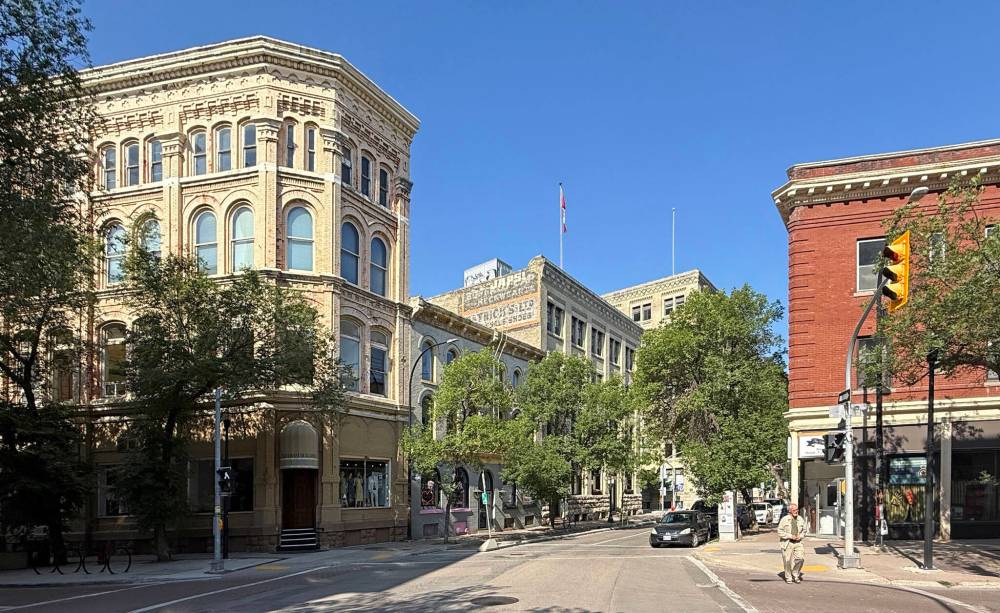Try out being a tourist at home — in Winnipeg
Advertisement
Read this article for free:
or
Already have an account? Log in here »
To continue reading, please subscribe:
Monthly Digital Subscription
$1 per week for 24 weeks*
- Enjoy unlimited reading on winnipegfreepress.com
- Read the E-Edition, our digital replica newspaper
- Access News Break, our award-winning app
- Play interactive puzzles
*Billed as $4.00 plus GST every four weeks. After 24 weeks, price increases to the regular rate of $19.00 plus GST every four weeks. Offer available to new and qualified returning subscribers only. Cancel any time.
Monthly Digital Subscription
$4.75/week*
- Enjoy unlimited reading on winnipegfreepress.com
- Read the E-Edition, our digital replica newspaper
- Access News Break, our award-winning app
- Play interactive puzzles
*Billed as $19 plus GST every four weeks. Cancel any time.
To continue reading, please subscribe:
Add Winnipeg Free Press access to your Brandon Sun subscription for only
$1 for the first 4 weeks*
*$1 will be added to your next bill. After your 4 weeks access is complete your rate will increase by $0.00 a X percent off the regular rate.
Read unlimited articles for free today:
or
Already have an account? Log in here »
Many Canadians and Manitobans are rethinking their travel plans to the United States this summer.
Rather than exploring the architecture and history of other places, we might take this opportunity to become tourists in our own city, rediscovering Winnipeg — a city that is often underappreciated, but one that is truly unique in Canada.
A good starting point for exploration is Upper Fort Garry Heritage Provincial Park. Once the administrative hub of the fur trade and the site of the Louis Riel-led Red River Rebellion, this fort is often considered the birthplace of both Winnipeg and Manitoba.
Visitors can connect to its history by walking through interpretive gardens that outline the ghosts of lost buildings or take in the dramatic public art wall that rises along the original fortifications.
Brent Bellamy Photo Upper Fort Garry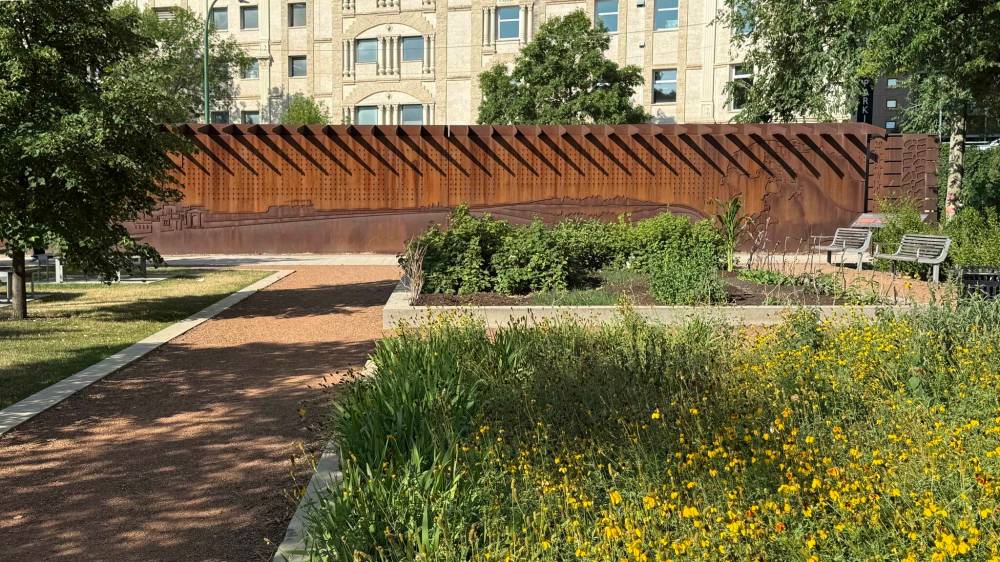
The land surrounding the fort was once part of the HBC Reserve, a 200-hectare tract that stretched north to present-day Notre Dame Avenue. After the Hudson’s Bay Company surrendered Rupert’s Land to the federal government, it retained this property, transforming it into Winnipeg’s first planned neighbourhood.
With Broadway as its central thoroughfare, streets were laid out, thousands of elm trees planted, and schools and churches were built to attract residential development. Many of Winnipeg’s most prominent citizens moved in, building elegant homes along the tree-lined avenues.
One such citizen was Sir Hugh John Macdonald, a Manitoba premier and son of Canada’s first prime minister. In 1895, he would build Dalnavert House, a red-brick mansion on Carlton Street, one of Winnipeg’s first homes with electricity, indoor plumbing, and central heating.
A century later, the Canadian Antiques Society hailed it as “one of the finest examples of Victorian domestic architecture in North America.”
Dalnavert House on Carlton Street, one of Winnipeg’s first homes with electricity, indoor plumbing, and central heating.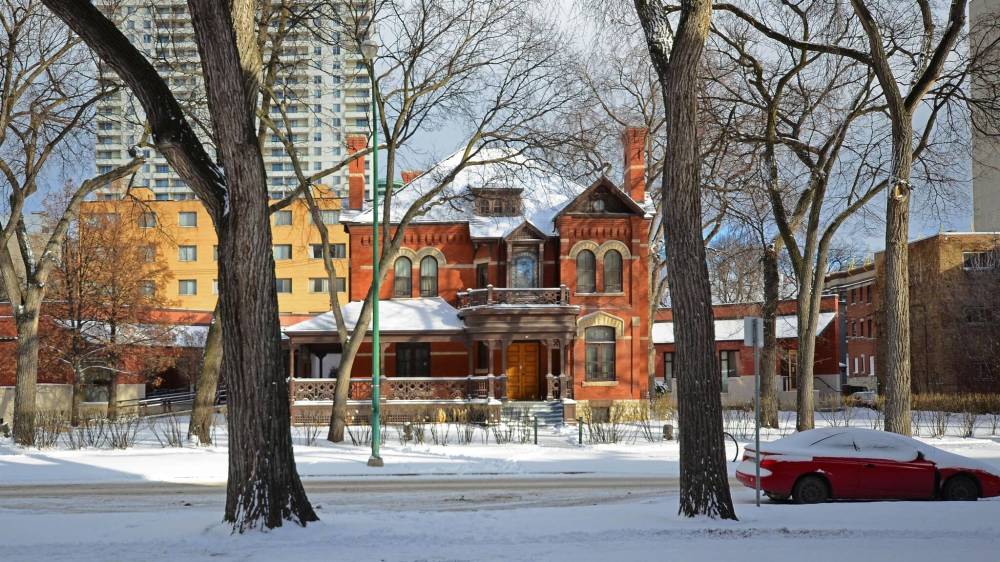
Unfortunately, much of the beautiful historic neighbourhood has been replaced with parking lots and large modern buildings, but you can still find a few of the houses, apartments and churches hiding in their shadows, and Dalnavert is today a beautiful immersive museum.
Walking through its doors allows one to imagine what the grand neighbourhood was once like, providing a glimpse into the way of life for early Winnipeggers.
North of the HBC Reserve, a neighbourhood of muscular, stone buildings was also rising, the entrepreneurial centre of an optimistic young city.
The Exchange District National Historic Site is today the most intact turn of the century commercial neighbourhood in Canada, standing as a physical record of Winnipeg’s transformation from pioneer settlement to modern metropolis.
Strolling through the Exchange on a warm summer day, it’s easy to imagine a time when wooden sidewalks bustled with men wearing dark hats, ladies wearing long dresses, and the clip-clop sound of horse-drawn carriages filling the air.
Stand at the corner of McDermot and Albert and you are surrounded by buildings that have witnessed much of our city’s history. Their worn and uneven brick walls are eager to tell us their story.
Taking the time to read their facades — the rhythm of arched windows, the detailed brickwork, the ornate cornices — you begin to unlock their quiet narrative.
Walk under the shadows of Union Bank Tower at the bend in Main Street to appreciate what is Canada’s first skyscraper, the tallest building in the country at its completion. A landmark of such significance would be nationally recognized if it had the boosterism of Toronto or Montreal.
Brent Bellamy Photos Winnipge’s Exchange District shows off the layers of hand painted wall advertisements that are slowly fading into time.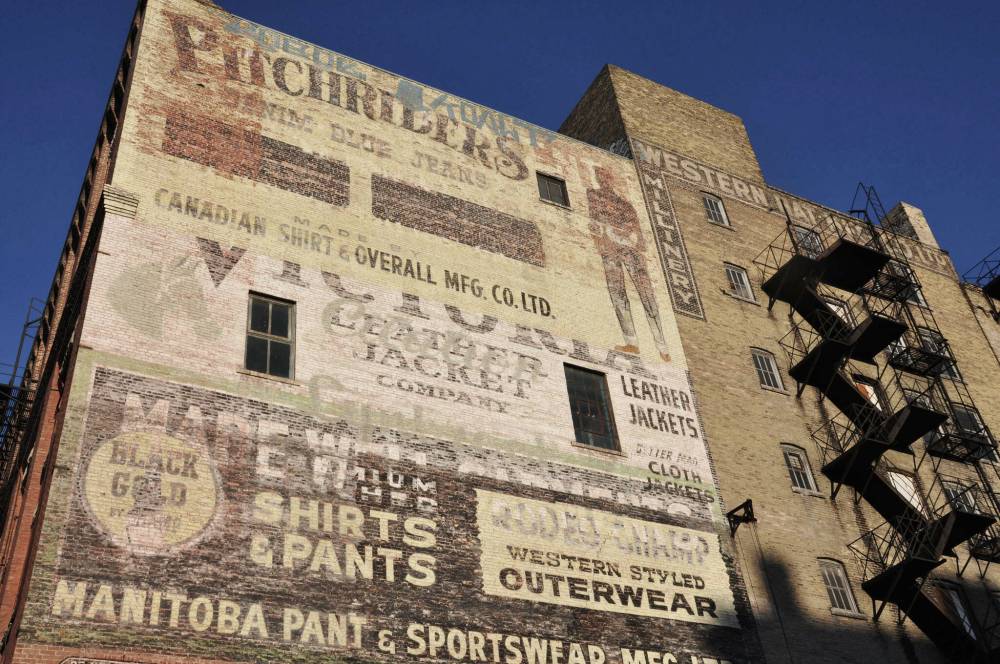
An added layer of the Exchange District experience is to explore Canada’s best collection of ghost signs, the layers of hand painted wall advertisements that are slowly fading into time.
These ethereal pieces of the urban fabric tell the colourful story of the neighbourhood as a manufacturing centre, our once-thriving garment industry represented by companies such as Buffalo Cap and Neckwear, Patrick’s Shoes and McGregor Hosiery.
Brent Bellamy Photo The Union Bank Tower, Canada’s first skyscraper, the tallest building in the country at its completion.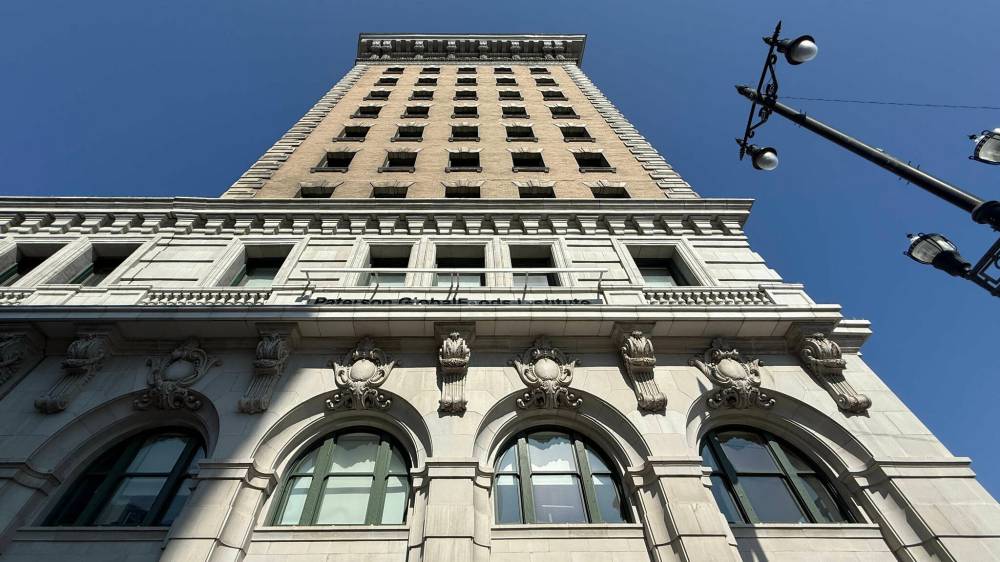
Today, the Exchange’s yellow brick warehouses and terra cotta towers are filled with galleries, restaurants, theatres, and shops. Visitors can enjoy concerts or festivals, take tours, or simply wander through this 20-block National Historic Site — an urban treasure few cities possess.
Across the river from the Exchange, another chapter of Winnipeg’s unique story is brought to life. Once two cities — one English, one French — Winnipeg’s dual identity is expressed through a small collection of historic buildings, with the city’s best view of its modern skyline.
Standing in the tranquil courtyard of St. Boniface Cathedral the circular opening that once held a stunning rose window tells the story of a young painter working in the attic on a mid-summer day in 1968.
A cigarette carelessly flicked away would cause a fire that ripped through the largest and most imposing church in Western Canada. Within an hour, the two great towers at its front would collapse, tearing through the roof of the building, and through the heart of the Franco-Manitoban community.
The courtyard of St. Boniface Cathedral.
A beautiful modern church, designed by architect Étienne Gaboury, sits with grace and elegance withinthe ruins, creating an internal courtyard that provides a place to quietly reflect on both the sense of loss and the perseverance of a dynamic community that found such a thoughtful way to rebuild and move forward.
Next door, the Saint-Boniface Museum continues the celebration of that community, housed in the former Grey Nuns Convent built in 1846, a gracious two-storey hipped roof structure that is the largest oak log building in North America.
Moving north, an exploration can go even further back in time to reveal the stories of the earliest settlers in the west — from Seven Oaks House, the oldest home on the Canadian Prairies, and its neighbour, Inkster’s General Store from 1831, the oldest building in Winnipeg, to the settler homesteads along River Road and St. Andrew’s, the oldest church in Western Canada.
As a bookend to the interpretive gardens that hold the memory of a lost fort in Downtown Winnipeg, the real thing still sits along the Red River just north of the city limits. Despite a junior high field trip being the last time most of us have visited Lower Fort Garry, the oldest intact fur-trading post in North America and the location of the signing of Treaty One deserves to be given a profile of international prominence.
Brent Bellamy Photo Lower Fort Garry.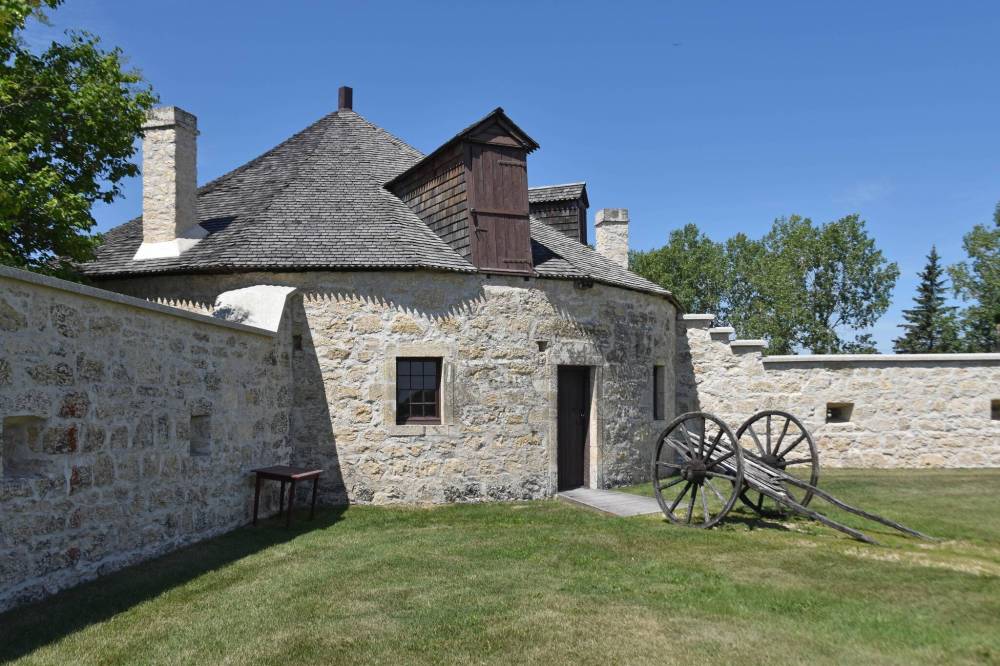
Wandering the grounds, listening to the interpreters, and absorbing the history of an original, perfectly preserved two-century-old fur-trading fort is an experience that cannot be had anywhere else in the country.
Winnipeg is a city that is rarely thought of as a tourist destination, but the stories told through its architecture are unique in Canada. Taking the time to be tourists in our own city might help us more deeply understand ourselves and invite others to join us on that journey.

Brent Bellamy is creative director for Number Ten Architectural Group.
Our newsroom depends on a growing audience of readers to power our journalism. If you are not a paid reader, please consider becoming a subscriber.
Our newsroom depends on its audience of readers to power our journalism. Thank you for your support.


